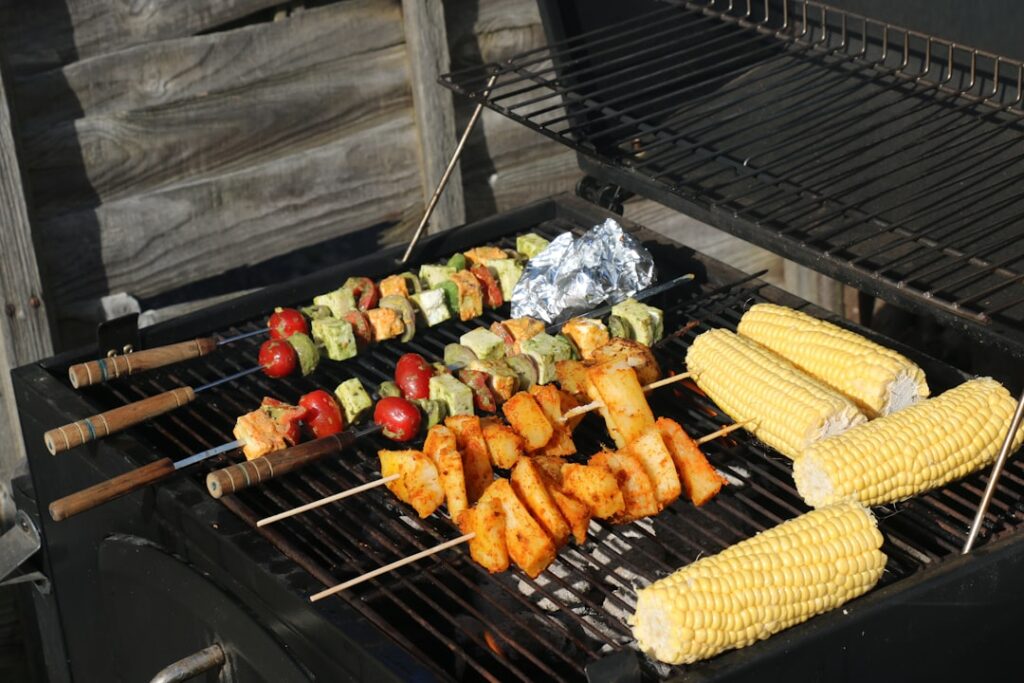Let’s have a moment of silence for all the vegetables that have met a tragic end. We’re talking about the boiled-into-oblivion broccoli, the microwaved-to-mush carrots, and the steamed-into-sadness green beans of our past. But there is a better way. A path to enlightenment paved with perfectly charred asparagus and smoky, sweet bell peppers. Welcome to the art of grilling vegetables—a practice that’s less about brute force and more about mindful attention.
To truly master the flame, we must first understand the landscape. Like any good zen koan, grilling vegetables is a beautiful paradox of pros and cons, of glorious reward and potential peril.
The Pros: Why Your Soul (and Stomach) Needs Grilled Veggies
First, let’s bask in the radiant glow of the upside. Grilling vegetables isn’t just a cooking method; it’s a lifestyle upgrade.
Pro #1: You’ll Achieve Flavor Nirvana
When vegetables hit a hot grill, something magical happens. It’s called the Maillard reaction, but you can just call it “delicious.” The natural sugars in vegetables caramelize, creating a deep, savory-sweetness you can’t get from a steamer. That touch of smoky char from the flame adds a complex, rustic flavor that makes even a humble zucchini taste like a gourmet delicacy. You’re not just cooking; you’re unlocking hidden potential.
Pro #2: The Zen of Simplicity
In a world of complicated recipes and a sink full of dishes, grilling is a breath of fresh, smoky air. The process is beautifully minimalist. All you truly need are your vegetables, a glug of good olive oil, a generous pinch of salt and pepper, and a fire. The cleanup is a breeze—no pots, no pans, just a quick scrape of the grill grates. It’s a meditative ritual: the rhythmic chop of the knife, the sizzle of the veggies hitting the heat, the focus required to not let them burn. It’s cooking that calms the mind.
Pro #3: A Health Halo That Actually Tastes Good
Let’s be honest, “healthy” can sometimes be a code word for “bland.” Not here. Grilling is one of the healthiest ways to cook. It requires minimal fat, and unlike boiling, it helps vegetables retain more of their vitamins and nutrients. You get all the flavor, all the gorgeous color, and all the health benefits without feeling like you’re making a sacrifice. It’s the culinary equivalent of having your cake and eating it, too—except the cake is a perfectly grilled portobello mushroom.
The Cons: Navigating the Pitfalls of the Grill
Of course, the path to enlightenment is fraught with challenges. Here are the common disasters that befall beginner grillers and the mindful solutions to avoid them.
Con #1: The Cremation Conundrum
The Problem: There’s a razor-thin line between “artistically charred” and “inedible charcoal briquette.” You turn away for 30 seconds to answer a text, and your beautiful bell peppers have been sacrificed to the flame gods.
The Mindful Solution: Embrace the two-zone fire. This is the single most important trick. Bank your hot coals to one side of the grill (or only turn on the burners on one side of a gas grill). This creates a “direct heat” zone for searing and getting those gorgeous grill marks, and an “indirect heat” zone for gently cooking the vegetables through without burning them. Sear on the hot side, then move them to the cooler side to finish. Pay attention. Listen to the sizzle. Stay present with your peppers.
Con #2: The Great Escape
The Problem: You watch in horror as your meticulously sliced asparagus spears and cherry tomatoes perform a death-defying leap through the grill grates, lost forever to the fiery abyss below.
The Mindful Solution: Think like an engineer. For smaller vegetables, skewers are your best friend. Threading them on makes them easy to handle and impossible to lose. A grill basket is another game-changer, essentially turning your grill into a fiery wok. You can also change your cut: slice zucchini and onions into long, wide planks or thick “steaks” instead of small, tragedy-prone rounds.
Con #3: The Sahara Desert Effect
The Problem: Your vegetables come off the grill looking dry, shriveled, and deeply unhappy. They have the texture of seasoned cardboard.
The Mindful Solution: Oil is your protector. Don’t be shy with a good coating of olive or avocado oil before your veggies hit the heat. This creates a barrier that locks in moisture and prevents them from drying out. A simple marinade of oil, acid (like balsamic vinegar or lemon juice), and herbs for 30 minutes can also work wonders. And crucially, don’t overcook them! You want them tender-crisp, not limp and exhausted.
With these simple, mindful practices, you can sidestep the common pitfalls and elevate your vegetable game from a necessary chore to a delicious art form. So fire up the grill, embrace the sizzle, and prepare for enlightenment—one perfectly charred vegetable at a time.
Photo by Amit Daruka on Unsplash

